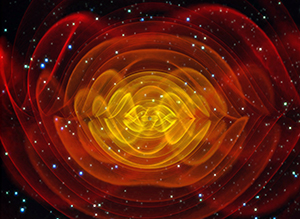
The massive black holes (~109 solar masses) ubiquitous in the Universe today are thought to stem from seed black holes formed early in the Reionization era. The origin of these seeds is uncertain. They may have formed from either large stellar mass black holes (~100 solar masses) left over from the first stars or intermediate mass black holes (~104–5 solar masses) formed directly by the collapse of supermassive gas clouds. Whether supermassive black holes grow through mergers or accretion, their host galaxies appear to have co-evolved with them. A strong correlation has become evident between the properties and evolution of galaxies and the growth of their central supermassive black holes. The energetic processes around SMBHs result in huge radiative andmechanical outputs that could potentially have a profound effect on their larger scale environment in galaxies, clusters and the intergalactic medium. But quantitative descriptions of the interaction between massive black hole growth and galaxy growth are lacking. Understanding the formation of galaxies, and their subsequent evolution, will be coupled to intensive study of the evolution of supermassive black holes.